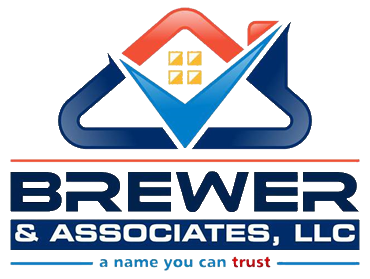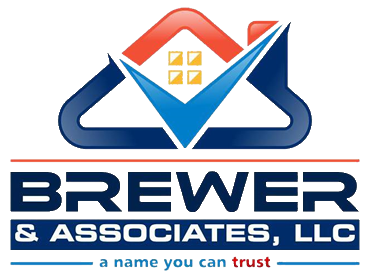Commercial Roofing
Brewer and Associates are is a full-service commercial roofing contractor. We are experienced in roof maintenance, roof and leak repair, roof-over, and roof replacements. We understand how vital it is that you safeguard your investment, which is why we strive to provide the highest level of craftsmanship, professionalism and customer service in the industry today. By providing a full range of services for all types of commercial structures we have developed many long-standing partnerships with our clients, and we look forward to enjoying the same success with you. Whatever your roofing needs.
For a business, a serious roof problem or failure can mean not only a loss of income during the day, but a feeling of panic should it occur after hours. With Brewer and Associates 24-hour emergency services, you can rest assured that help is only a phone call away, no matter the time of day or night
Our specialties include:
|
|
.We are certified experts with the following types of roofing:
|
|
Thermoplastic Roofing (TPO)
Thermoplastic materials are distinguished from thermoset materials in that there is no chemical crosslinking. These membranes can be repeatedly softened by heating or hardened when cooled. Because of the materials’ chemical nature, thermoplastic membranes typically are seamed by heat welding with hot air or solvent welding. There are five common subcategories of thermoplastic roof membranes.
- Polyvinyl Chloride (PVC)
- PVC Alloys or Compounded Thermoplastics
- Copolymer Alloy (CPA)
- Ethylene Interpolymer (EIP)
- Nitrile Alloys (NBP)
- Tripolymer Alloy (TPA)
- Thermoplastic Olefin (TPO)
- Chlorinated Polyethylene (CPE)
The most common thermoplastic roof membranes are PVC and TPO. The following provides general descriptions of these two systems. Polyvinyl Chloride (PVC) PVC sheets are produced by calendaring, spread coating or extruding, and typically are reinforced with polyester or glass-fiber mats or scrim. PVC sheets contain plasticizers and stabilizers, as well as other additives to impart flexibility and achieve other desired physical properties. Some membranes are available with nonwoven fleece backing adhered to the underside of a sheet.
- Sheet widths range from 6 feet to 12 feet wide.
- Sheets are typically 45 mils to 90 mils thick.
- Seams are sealed by heat or chemical welding.
- PVC membranes are produced in numerous colors, though gray and white are the most common.
Thermoplastic Olefin (TPO) TPO membranes are produced by calendering with lamination, extrusion with lamination, or extrusion-coating techniques. TPO sheets are a blend of polypropylene and ethylene propylene polymers and usually are reinforced with polyester. TPO sheets contain colorant, flame retardants, UV absorbers and other proprietary substances to achieve desired physical properties.
- Sheet widths range from 6 feet to 12 feet wide
- Sheets are typically 40 mils to 100 mils thick
- Seams are sealed by heat welded with hot air
- TPO membranes commonly are white.
Elastomeric Roofing
Single-Ply Roofing While built-up roofing (BUR) utilize multiple layers of reinforcing and field-applied bitumen for the waterproofing, many MB systems use just two factory-coated sheets. EPDM goes even further, using just single layers of rubber and reduces field seaming by offering sheets in widths up to 50 feet. Many of these EPDM sheets also eliminate internal reinforcement entirely. While EPDM is the polymer of choice today, other elastomers have been used in the recent past, including butyl rubber, neoprene (chloroprene), polyepichlorohydrin, and Hypalon® (chlorosulfonated polyethylene or CSPE).
Basics of EPDM Rubber Roofing
- The polymeric component is a blend of polyethylene and polypropylene with a small amount of an unsaturated diene, a monomer that contains multiple double bonds through which cross linking or vulcanization can take place.
- Carbon black (consisting of extremely fine carbon particles) is added to act as an ultraviolet screening agent, as well as to increase the modulus of elasticity (increased tensile and tear resistance).
- Inert fillers such as limestone reduce membrane costs.
- Extending oil permits greater loading of low-cost fillers.
- Curing agents, processing aids, and catalysts.
- Fire retardants.
- UV- or ozone-resisting additives.
While most EPDM sheets are compounded with carbon black, white rubber has been attempted without much success. Currently, if a white roof is desired, a white coating is field applied after the EPDM membrane installation is completed.
EPDM membranes may be non-reinforced, generally for ballasted systems, or they may have internal scrim reinforcement for mechanically fastened systems where concentrated stresses are expected. Typical product thicknesses are 1.1 millimeters (or 0.045 inches), 1.5 millimeters (or 0.060 inches), and 2.2 millimeters (or 0.090 inches). MB sheets are typically 4 millimeters for cap sheets and 3.5 millimeters for base sheets. Fire-retardants sheets are available, but are not required to meet the building code when ballast is to be applied.

